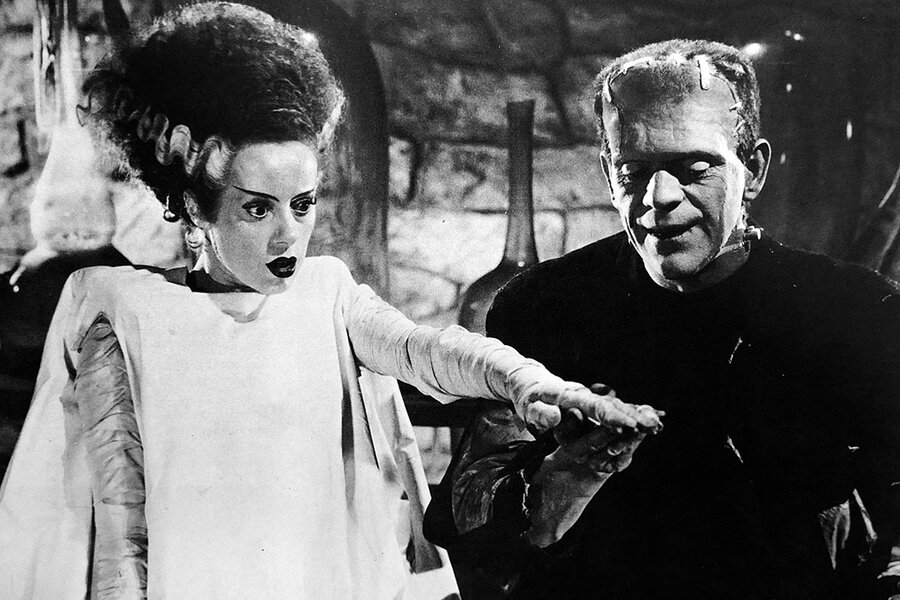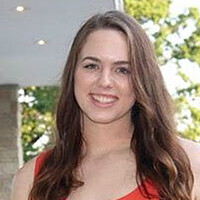It’s alive! On Halloween, Frankenreads celebrate 200th anniversary of classic
| WASHINGTON
Carolinn Kuebler says she found the perfect way to celebrate one of her favorite holidays.
On Oct. 31, she headed to the haunted halls of … the Library of Congress. There authors, actors, and librarians were lining up – not to trick or treat or wait for the Great Pumpkin – but to bring a 200-year-old book to life.
Wearing a festive sweater with a bright orange pumpkin on it, the Washington architect listens intently to “Frankenstein,” a novel she herself has read several times. She says she’s happy to relive the story of the inventor who thought he could create life, and this time have it read aloud to her.
“With podcasts and everything, people are really getting into listening to stories again, which I think is really cool,” says Ms. Kuebler.
To celebrate the anniversary of “Frankenstein,” more than 600 Frankenreads have been planned in at least 43 countries – ranging from film screenings to museum exhibits to marathon reads of the monstrous classic, which has inspired everything from more than 50 movies to breakfast cereal.
“It goes beyond popular culture and into the book itself,” says Marc Ruppel, a senior program officer for the National Endowment for the Humanities, which partnered with the Keats-Shelley Association of America to create the Frankenreads. “And the fact that it has something to tell us about ourselves, something to tell us about the ways that we engage with technology, engage with humanity, and engage with each other.”
At the Library of Congress’s free event, designated readers, including award-winning author Louis Bayard and Washington Post book critic Ron Charles, stand at two podiums in the center of the room. Each read for ten minutes as a camera switches between the two so that the reading can continue unbroken. The list includes a few pre-recorded appearances from figures like horrormeister R.L. Stein, actor John Cena, and Librarian of Congress Carla Hayden. Throughout the reading, tours of the library continue with school groups catching snippets of the novel as they walk by.
From “The Munsters” to “Young Frankenstein” to memes, the horror story a teenage Mary Shelley dreamed up one night to win a contest in which the competition included her poet husband, Percy Bysshe Shelley, and Lord Byron has resonated in pop culture. In fact, a movie about the contest itself, starring Elle Fanning, was released just last year.
In addition to winning the contest, some literary scholars say Shelley invented what became the science fiction genre.
“It’s a very complicated fable but it’s deeply embedded in all sorts of cultural, professional, scientific, technological anxieties about progress, which comes with promise and doesn’t always think through the perils,” says Dr. Susan Wolfson, a professor of English at Princeton University who organized a Frankenread on campus.
Reading aloud presents an important alternative to entertainment on screens, says Mr. Ruppel. The marathon read of “Frankenstein,” inspired in part by Bloomsday readings of “Ulysses” by James Joyce, holds significance in a world where technology encourages separate, individuated experiences.
“It matters that we begin to start to share these things again,” says Ruppel, “and that we do it in way I think that allows for some real patience and just deliberateness on our part.”
The book, which is estimated to have sold 80 million to 100 million copies worldwide, has been kept alive in part to its celebration in film, says Neil Fraistat, president of the Keats-Shelley Association of America and organizer of Frankenreads. Since 1910, film renditions have popularized the story all over the world, with actors from Boris Karloff to Peter Boyle to Robert De Niro playing Victor Frankenstein’s misbegotten creation. But the novel’s message – as well as the monster – are why it still resonates.
Throughout the many retellings of the Gothic novel, “Frankenstein” encourages us to think more deeply about humanity, says Mr. Fraistat. And in doing so, “we can learn the importance of empathy, love, [and] ethical responsibility.”









